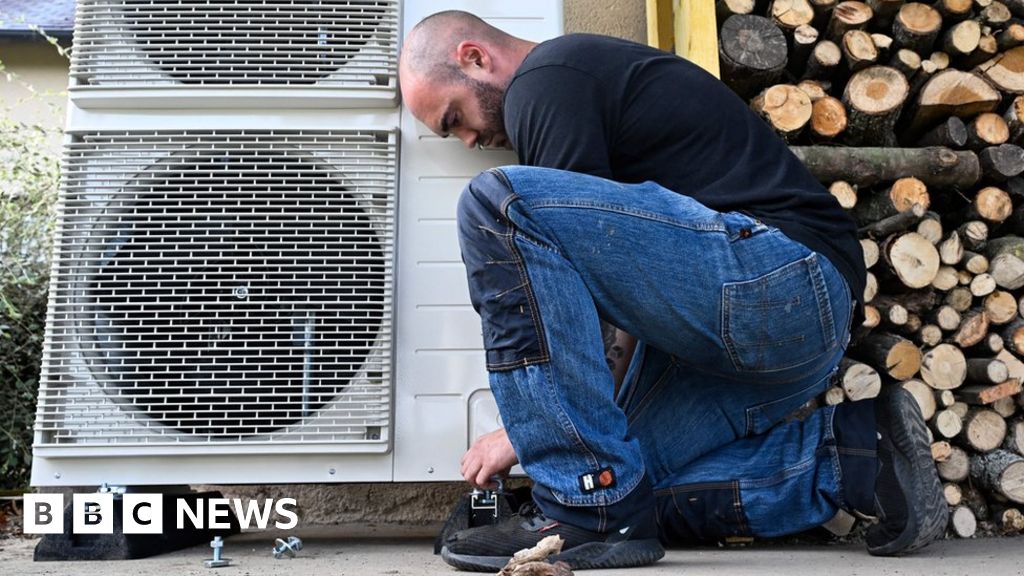The first heat pumps Graham Hendra sold, about 15 years ago, weren’t very hot.
“To get 50C – that was quite hard,” says the former wholesaler, referring to the temperature of the water that these devices sent to radiators, known as the flow temperature.
Today’s gas combi boilers are typically designed for flow temperatures of around 50-60C.
Today’s gas combi boilers are typically designed for flow temperatures of around 50-60C.
But a new breed of heat pumps is emerging. Engineers have gradually improved the technology, meaning that heat pumps are now able to supply much higher temperatures, sometimes in excess of 70C.
A major change has been the rise of new refrigerants, including R290, or propane. This is the fluid that circulates inside a heat pump. In an air source device, the refrigerant captures warmth from the outside air, even on cold days. By compressing the slightly warmed refrigerant, the heat pump is able to increase the temperature and then transfer that heat into a property.
R290 is more environmentally friendly than older refrigerants so leaks are not as potentially damaging in climate change terms. Plus, it is up to 34% more efficient, which helps heat pumps supply higher temperatures without incurring severe efficiency losses.
Mr Hendra is now technical director at Genous, a firm that gives advice to homeowners on how to make their properties more energy efficient.
“We have a thing in our industry that I call ‘temperature anxiety’,” he says, likening it to the “range anxiety” that some consumers have about electric cars.
The first heat pumps Graham Hendra sold, about 15 years ago, weren’t very hot.
Today’s gas combi boilers are typically designed for flow temperatures of around 50-60C.
“To get 50C – that was quite hard,” says the former wholesaler, referring to the temperature of the water that these devices sent to radiators, known as the flow temperature.
But a new breed of heat pumps is emerging. Engineers have gradually improved the technology, meaning that heat pumps are now able to supply much higher temperatures, sometimes in excess of 70C.
Today’s gas combi boilers are typically designed for flow temperatures of around 50-60C.
Today’s gas combi boilers are typically designed for flow temperatures of around 50-60C.
But a new breed of heat pumps is emerging. Engineers have gradually improved the technology, meaning that heat pumps are now able to supply much higher temperatures, sometimes in excess of 70C.
A major change has been the rise of new refrigerants, including R290, or propane. This is the fluid that circulates inside a heat pump. In an air source device, the refrigerant captures warmth from the outside air, even on cold days. By compressing the slightly warmed refrigerant, the heat pump is able to increase the temperature and then transfer that heat into a property.
R290 is more environmentally friendly than older refrigerants so leaks are not as potentially damaging in climate change terms. Plus, it is up to 34% more efficient, which helps heat pumps supply higher temperatures without incurring severe efficiency losses.
Mr Hendra is now technical director at Genous, a firm that gives advice to homeowners on how to make their properties more energy efficient.
“We have a thing in our industry that I call ‘temperature anxiety’,” he says, likening it to the “range anxiety” that some consumers have about electric cars.
#hotter #heat #pumps #win #homeowners
Note:- (Not all news on the site expresses the point of view of the site, but we transmit this news automatically and translate it through programmatic technology on the site and not from a human editor. The content is auto-generated from a syndicated feed.))



